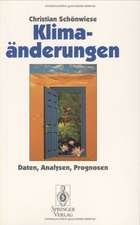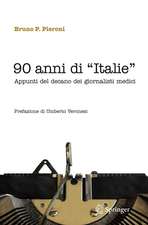Brute Force: Cracking the Data Encryption Standard
Autor Matt Curtinen Limba Engleză Hardback – 16 feb 2005
The strength of an encryption system is best measured by the attacks it is able to withstand, and because DES was the federal standard, many tried to test its limits. (It should also be noted that a number of cryptographers and computer scientists told the NSA that DES was not nearly strong enough and would be easily hacked.) Rogue hackers, usually out to steal as much information as possible, tried to break DES. A number of "white hat" hackers also tested the system and reported on their successes. Still others attacked DES because they believed it had outlived its effectiveness and was becoming increasingly vulnerable. The sum total of these efforts to use all of the possible keys to break DES over time made for a brute force attack.
In 1996, the supposedly uncrackable DES was broken. In this captivating and intriguing book, Matt Curtin charts DES’s rise and fall and chronicles the efforts of those who were determined to master it.
| Toate formatele și edițiile | Preț | Express |
|---|---|---|
| Paperback (1) | 161.64 lei 3-5 săpt. | |
| Springer – 6 oct 2010 | 161.64 lei 3-5 săpt. | |
| Hardback (1) | 169.26 lei 3-5 săpt. | |
| Springer – 16 feb 2005 | 169.26 lei 3-5 săpt. |
Preț: 169.26 lei
Nou
Puncte Express: 254
Preț estimativ în valută:
32.39€ • 33.82$ • 26.74£
32.39€ • 33.82$ • 26.74£
Carte disponibilă
Livrare economică 25 martie-08 aprilie
Preluare comenzi: 021 569.72.76
Specificații
ISBN-13: 9780387201092
ISBN-10: 0387201092
Pagini: 292
Ilustrații: XII, 292 p. 10 illus.
Dimensiuni: 155 x 235 x 28 mm
Greutate: 0.59 kg
Ediția:2005
Editura: Springer
Colecția Copernicus
Locul publicării:New York, NY, United States
ISBN-10: 0387201092
Pagini: 292
Ilustrații: XII, 292 p. 10 illus.
Dimensiuni: 155 x 235 x 28 mm
Greutate: 0.59 kg
Ediția:2005
Editura: Springer
Colecția Copernicus
Locul publicării:New York, NY, United States
Public țintă
Popular/generalCuprins
Working Late.- Keeping Secrets.- Data Encryption Standard.- Key Length.- Discovery.- RSA Crypto Challenges.- Congress Takes Note.- Supercomputer.- Organizing DESCHALL.- Needle in a Haystack.- Spreading the Word.- The Race Is On.- Clients.- Architecture.- Progress.- Trouble.- Milestones.- Gateways.- Network.- Download.- Short Circuit.- DESCHALL Community.- Proposal.- In the Lead.- Recruiting.- Threats.- Overdrive.- Distributed.- An Obstacle.- Export.- Getting Word Out.- Salvos in the Crypto Wars.- New Competition.- Netlag.- Terminal Velocity.- Duct Tape.- Showdown in the Senate.- “Strong Cryptography Makes the World a Safer Place”.- Aftermath.- Staying the Course.- In Retrospect.
Recenzii
From the reviews:
An excellent story about the thousands of volunteers who battled to prove that the aging standard for date encryption was too weak and to wrestle strong cryptography from the control of the U.S. government...It is a worthy book for almost anyone who has a computer.
-Louis Kruh, Cryptologia, Volume 30, 2006
Brute Force is about as entertaining a read as you will get on cryptography. It provides a detailed account of how DES was taken down and is an interesting read for any student of cryptography and the crypto wars of the 1990s.
-Ben Rothke, UnixReview.com, September 2005
Matt Curtin was right at the heart of the Deschall cracking effort, and his book is excellent in describing the day-to-day progress towards the goal...
-Richard Clayton, Times Higher Education Supplement (U.K.), October 2005
"This book is an exciting popular account of an important event nearly ten years ago in the social history of cryptography. … The book is written to tell the story of how the DESCHALL (Des challenge) project came together, to encourage interest in cryptography amongst the young and to make the subject more accessible to people. It would seem to be successful on all counts." (P. D. F. Ion, Mathematical Reviews, Issue 2006 j)
"DESCHALL’s goal was to search through 72 quadrillion keys to demonstrate the feasibility of a brute force attack on DES … . Curtin starts with the genesis of DES … . he manages to keep interest alive with a taut but lively prose, a focus on the human element of the story … . the non-technical reader will appreciate the evocative similes … . Perhaps most intriguing in Curtin’s narrative are … the human and social aspect of divvying up the workload … ." (Daniel Bilar, MathDL, November, 2005)
An excellent story about the thousands of volunteers who battled to prove that the aging standard for date encryption was too weak and to wrestle strong cryptography from the control of the U.S. government...It is a worthy book for almost anyone who has a computer.
-Louis Kruh, Cryptologia, Volume 30, 2006
Brute Force is about as entertaining a read as you will get on cryptography. It provides a detailed account of how DES was taken down and is an interesting read for any student of cryptography and the crypto wars of the 1990s.
-Ben Rothke, UnixReview.com, September 2005
Matt Curtin was right at the heart of the Deschall cracking effort, and his book is excellent in describing the day-to-day progress towards the goal...
-Richard Clayton, Times Higher Education Supplement (U.K.), October 2005
"This book is an exciting popular account of an important event nearly ten years ago in the social history of cryptography. … The book is written to tell the story of how the DESCHALL (Des challenge) project came together, to encourage interest in cryptography amongst the young and to make the subject more accessible to people. It would seem to be successful on all counts." (P. D. F. Ion, Mathematical Reviews, Issue 2006 j)
"DESCHALL’s goal was to search through 72 quadrillion keys to demonstrate the feasibility of a brute force attack on DES … . Curtin starts with the genesis of DES … . he manages to keep interest alive with a taut but lively prose, a focus on the human element of the story … . the non-technical reader will appreciate the evocative similes … . Perhaps most intriguing in Curtin’s narrative are … the human and social aspect of divvying up the workload … ." (Daniel Bilar, MathDL, November, 2005)









